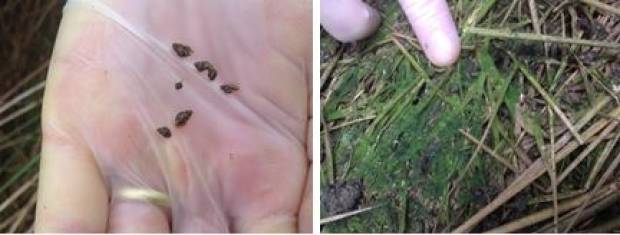
George's Liver Fluke Journal: Entry 1
9th October 2013
George Milne, NSA Scotland Regional Development Officer, farms near St. Andrews on the east coast of Scotland. This is not a part of the world where fluke would be expected to cause major losses, but in the winter of 2012/13 that is exactly what happened. George has kindly let his farm be used as a fluke surveillance farm in a project funded by the Scottish Government and Novartis Animal Health, and supported by Moredun Research Institute, Scottish Rural College, University of Edinburgh , Parkside Vets and the National Sheep Association. The surveillance farm is part of the Scottish Fluke Action Group, a group representing many aspects of the Scottish sheep industry that aims to give real-time information to vets and farmers on managing fluke. George will be adding to his journal on a regular basis, and this first entry looks at the story so far.
George’s Journal
In July, the April-born lambs were blood tested by Richard and Robert from Parkside Vets to see if they had antibody to liver fluke. Sheep develop antibodies to liver fluke but these antibodies do not provide protection from fluke infections. However, they can be used to find out whether sheep have been infected .The group explained that the lambs are the ideal group to test as they will never have encountered fluke before, so they must have become infected this year. In older sheep, antibodies may still be present but it is difficult to know whether antibodies in older animals indicate a problem in the current year or the previous year.
Of the lambs the vets tested for antibody, all but three came back positive for fluke, which was a surprise so early in the season. This is likely to have come from the infective cysts that were shed last year and overwintered on the fields or from the fluke that hibernated with the mud snail. [Click here to see the life cycle of liver fluke].
At the same time, we took faecal samples from the lambs to see if there were any fluke eggs present and also used a new test that measures products from the fluke’s gut that are detectable in the faeces. Apart from one lamb, these tests were all negative, which suggest the lambs had been infected but the fluke were not old enough to lay eggs.
2013 lambs - to treat or not to treat? At the time of testing, the lambs were in good condition and were not going for slaughter so we didn’t treat them. We are monitoring them every couple of weeks to see if we get more signs of fluke infection and will decide at a later date when to treat and what product to use. If I had been selling the lambs, I would probably have treated them to prevent liver condemnation at slaughter.
What about the rest of the flock? We took dung samples from the ewes and wethers that had been on the farm in the winter and they had lots of eggs, which meant they still had adult fluke. These animals were treated with a flukicide that kills adult fluke, I used Flukiver ( closantel) to stop more eggs being passed that would hatch to larvae and go on to infect the mud snails. If we can reduce the number of eggs being laid and the infection of the snails, we hopefully will have less fluke on the pasture in the autumn.
The situation on your farm may be different from mine but to find out if your lambs have been infected, speak to your vet and arrange some testing. You can also check if the ewes are carrying infection by taking a faecal sample from 10 ewes and sending it off to the lab. SRUC do the samples from my farm and will give you or your vet advice on how much is needed and the cost, but all labs will offer these services as well as some vets. We will be sampling the animals every 2-3 weeks so next time I can update you on what we find and what that means for controlling fluke on the farm.
The second of the two pictures above shows Galba truncatula, the mud snail we found in the marshy areas of the farm. The fluke need these to complete their life-cycle. On the left, you can see how small the snails are. On the right, you are lucky if you can see them at all (there are two snails close to the finger tip).



